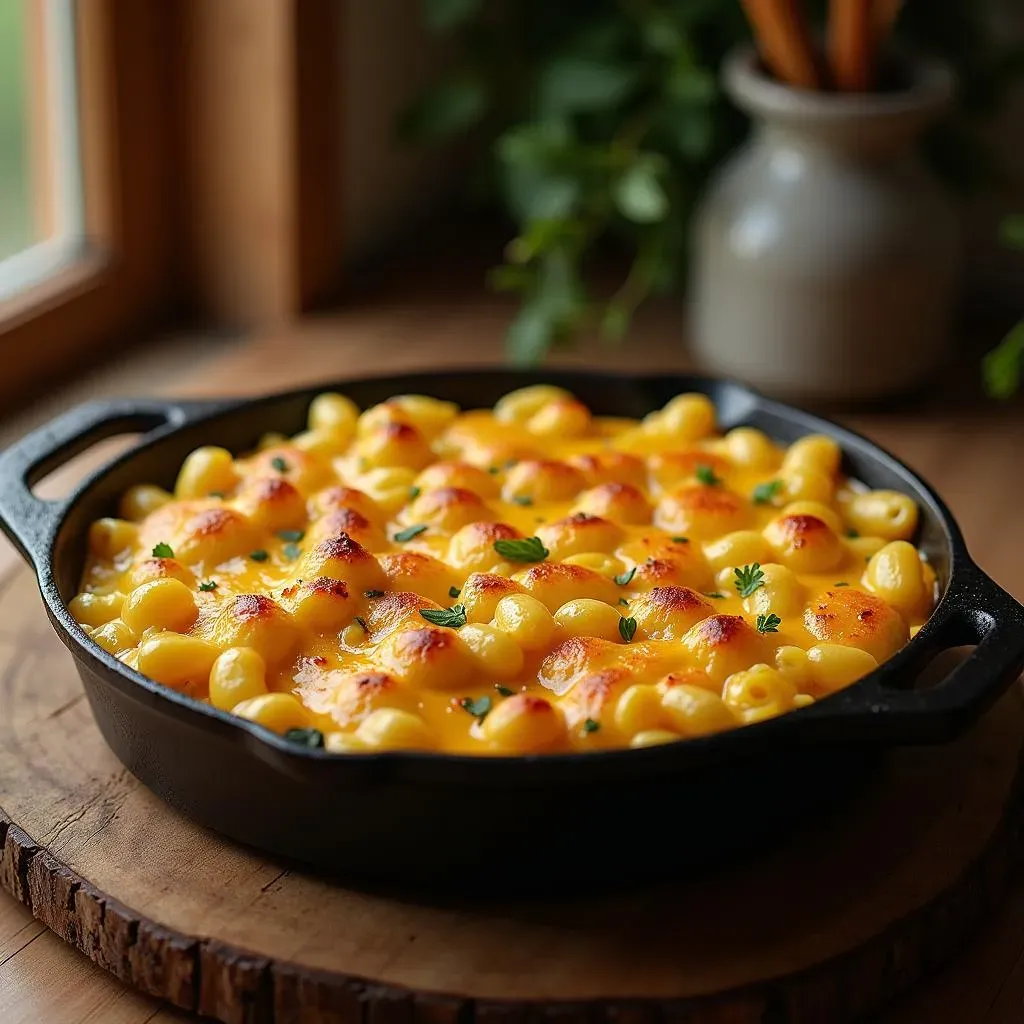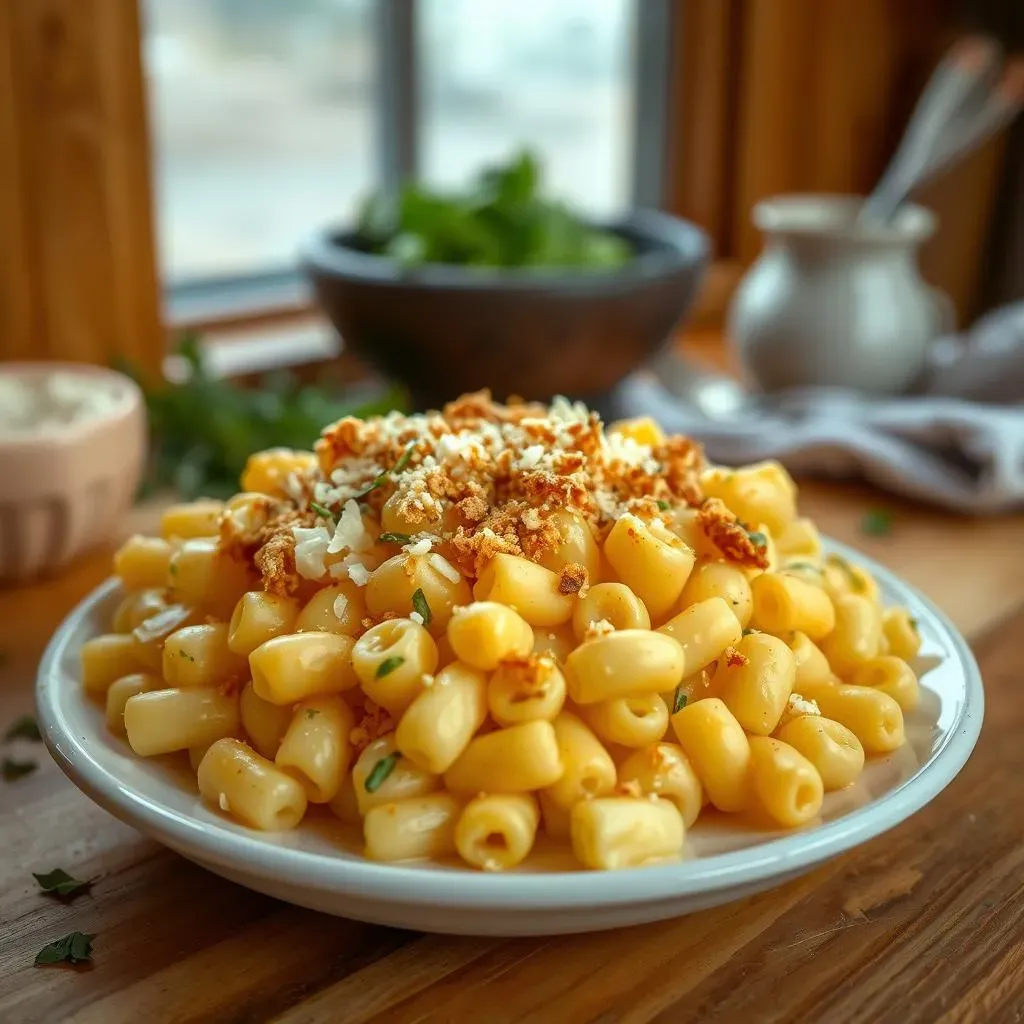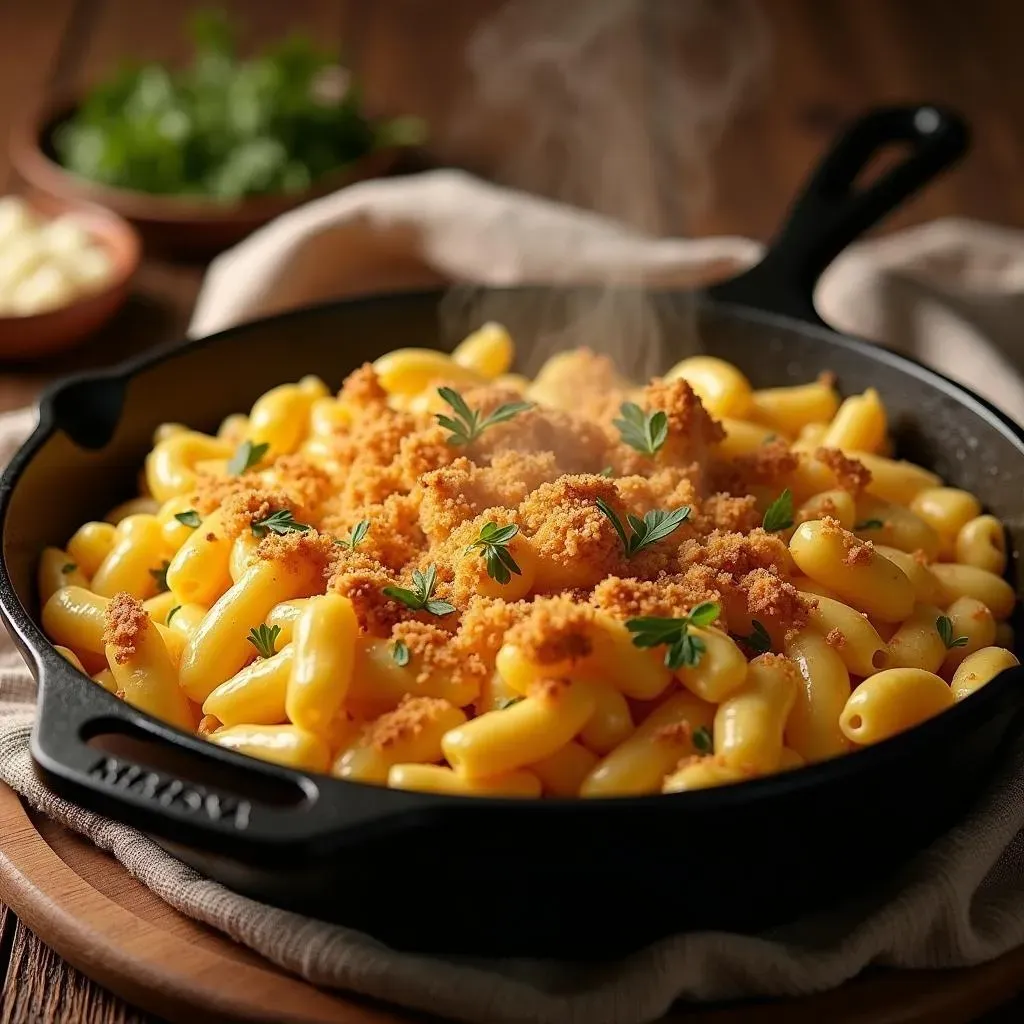Table of Contents
Get ready to elevate your mac and cheese game! This isn't your average boxed dinner; we're talking about the ultimate comfort food experience: classic mac and cheese in a cast iron skillet. Why cast iron? Because it delivers that irresistible crispy crust on top and perfectly creamy interior that you just can't get anywhere else. In this article, we'll unlock the secrets to making this iconic dish. We’ll explore why cast iron is the perfect vessel for this cheesy masterpiece, guiding you through the art of creating a flawlessly creamy cheese sauce. We'll also share some seriously delicious variations to take your mac and cheese from classic to extraordinary. Whether you're a seasoned chef or a kitchen novice, prepare to be amazed by how easy it is to achieve restaurant-quality results at home. So, grab your apron and let's dive into the cheesy goodness! Prepare for a journey to mac and cheese nirvana!
The Allure of Cast Iron: Why It's Perfect for Mac and Cheese

The Allure of Cast Iron: Why It's Perfect for Mac and Cheese
So, you're curious about why cast iron is the ultimate vessel for classic mac and cheese? Let me tell you, it's not just a trendy kitchen accessory; it's a game-changer. Think of it like this: cast iron is a heat-retaining superhero. It distributes heat evenly, ensuring that your mac and cheese cooks perfectly, from the creamy center to the gloriously browned top. This even cooking prevents hot spots and ensures every bite is delicious.
But the magic doesn't stop there. That incredible crispy, crunchy crust you crave? Cast iron delivers. The skillet's ability to get super hot creates that perfect caramelization on the cheese, adding a delightful textural contrast to the smooth, cheesy interior. It's a symphony of textures and flavors you won't find anywhere else. For even more tips on baking your mac and cheese, check out our guide on classic mac and cheese baking tips.
Cooking Method | Benefits |
|---|---|
Cast Iron Skillet | Even heat distribution, crispy crust, creamy interior |
Oven Bake (other pan) | Consistent cooking, but less crust |
Beyond the superior cooking, cast iron adds a rustic charm to your presentation. Serving your mac and cheese directly from the skillet is visually stunning, making it perfect for potlucks, holidays, or just a cozy night in. If you're a beginner, don't worry! We have an easy guide for beginners to help you.
And let's not forget the longevity. A well-seasoned cast iron skillet is an investment that will last for generations, becoming a cherished part of your kitchen. It's a piece of culinary history, adding character and warmth to your cooking. Plus, it's surprisingly easy to clean! (Okay, maybe not *surprisingly*, but easier than you think.) Looking for a basic recipe to get started? Check out our classic mac and cheese recipe.
- Even heat distribution
- Creates a crispy crust
- Rustic and visually appealing presentation
- Durable and long-lasting
Mastering the Creamy Cheese Sauce: Techniques and Tips

Mastering the Creamy Cheese Sauce: Techniques and Tips
The Roux: Your Creamy Foundation
The secret to a truly decadent mac and cheese sauce lies in the roux. Think of the roux as the superhero sidekick to your cheese – it’s the unsung hero that thickens and enriches your sauce, creating that velvety smooth texture we all crave. A roux is simply a mixture of butter and flour cooked together until it forms a paste. The ratio of butter to flour determines the thickness and color of your roux. A darker roux will have a richer, nuttier flavor, but be careful not to burn it! For more in-depth information on making a perfect roux, check out our guide on making mac and cheese without a roux.
Once your roux is ready, you'll gradually whisk in milk or cream, creating a smooth béchamel sauce. This is where patience is key. Take your time, whisking constantly to prevent lumps. Imagine it as a gentle dance between the roux and the dairy – a slow, deliberate waltz that results in a creamy masterpiece. Remember, a smooth béchamel is the foundation of a fantastic mac and cheese sauce. Need a quick recipe to get started? Check out our easy classic mac and cheese recipe.
- Start with a well-made roux
- Gradually whisk in milk or cream
- Patience is key to a smooth sauce
Cheese Selection and Incorporation
Now comes the fun part: the cheese! The type of cheese you use significantly impacts the flavor profile of your mac and cheese. Experiment with different combinations to find your perfect blend. Sharp cheddar, creamy Gruyère, and nutty Parmesan are all classic choices, but don't be afraid to get creative. For instance, smoked gouda adds a smoky depth, while fontina brings a subtle sweetness. Looking for inspiration? Check out our guide on different classic mac and cheese ingredients.
When adding cheese to your béchamel, remember to do so gradually, stirring constantly until each addition is fully melted and incorporated. This prevents the cheese from clumping and ensures a smooth, homogeneous sauce. Think of it like building a cheese castle – one perfectly melted brick at a time. Avoid using pre-shredded cheese, as it often contains cellulose which can prevent it from melting properly. Instead, grate your own cheese for the best results. For a detailed guide on cheese selection, check out our article comparing different cheeses in mac and cheese.
Cheese Type | Flavor Profile |
|---|---|
Cheddar | Sharp, tangy |
Gruyere | Nutty, complex |
Parmesan | Savory, salty |
Seasoning and Finishing Touches
Don't underestimate the power of seasoning! Salt and pepper are essential, but don't be afraid to experiment with other spices. A pinch of nutmeg adds warmth, while a dash of cayenne pepper provides a subtle kick. Remember, the goal is to complement the cheesy flavor, not overpower it. For some extra flavor, consider adding a touch of garlic powder or onion powder for a savory depth. Want to try something different? Our smoked paprika mac and cheese recipe is a great place to start!
Finally, once your mac and cheese is cooked, let it rest for a few minutes before serving. This allows the flavors to meld and the sauce to thicken slightly. Garnish with breadcrumbs, fresh herbs, or a drizzle of truffle oil for an extra touch of elegance. A sprinkle of freshly grated Parmesan cheese adds a final flourish of salty goodness. For more tips on achieving the perfect texture, check out our guide on mac and cheese cooking time.
“The best mac and cheese is a celebration of cheese, a testament to the power of simple ingredients, elevated by careful technique and a touch of love.” - Anonymous Cheese Enthusiast
Beyond the Basics: Flavor Variations and Serving Suggestions

Beyond the Basics: Flavor Variations and Serving Suggestions
Playing with Flavors: Beyond the Classic
Once you've mastered the classic mac and cheese, it's time to get creative! Think of your basic recipe as a blank canvas, ready for your culinary masterpiece. Adding bacon is a simple yet effective way to boost the flavor, and it adds a nice textural contrast. For a smoky twist, try our smoked gouda mac and cheese. Or, for a touch of earthiness, add sauteed mushrooms. The possibilities are endless!
Don't be afraid to experiment with different cheeses. A blend of sharp cheddar, creamy Gruyère, and nutty Parmesan is a classic, but you can also try adding some fontina for a touch of sweetness, or pecorino romano for a sharp, salty bite. For a truly unique flavor profile, consider adding roasted red peppers or sun-dried tomatoes for a burst of sweetness and acidity. Need some inspiration? Check out our guide on different cheeses in mac and cheese.
- Bacon
- Mushrooms
- Roasted Red Peppers
- Sun-dried Tomatoes
Spicing Things Up: Herbs and Spices
Herbs and spices can take your mac and cheese from good to unforgettable. A pinch of nutmeg adds a warm, comforting note, while a dash of cayenne pepper provides a subtle kick. For a more herbaceous flavor, try adding fresh thyme or rosemary. Garlic powder or onion powder can add a savory depth, while smoked paprika imparts a smoky flavor. For a unique twist, try adding a touch of truffle oil for an indulgent treat. Want to try a different flavor profile? Check out our recipe for smoked paprika mac and cheese.
Remember, the key is to balance the flavors. You want the herbs and spices to complement the cheese, not overpower it. Start with small amounts and adjust to your taste. Don’t be afraid to experiment! You might discover your new favorite mac and cheese combination. Want to learn more about different ingredient combinations? Check out our guide on classic mac and cheese ingredients.
Spice | Flavor Profile |
|---|---|
Nutmeg | Warm, comforting |
Cayenne Pepper | Spicy, bold |
Thyme | Earthy, herbaceous |
Serving Suggestions: Presentation Matters
Presentation is key! Serving your mac and cheese directly from the cast iron skillet is visually stunning, making it perfect for potlucks, holidays, or just a cozy night in. Garnish with crispy breadcrumbs for added texture, or a sprinkle of fresh herbs for a touch of elegance. A drizzle of truffle oil adds a touch of luxury. Want to make your mac and cheese even more impressive? Check out our tips on adding breadcrumbs.
Consider serving your mac and cheese alongside other dishes to create a complete meal. It pairs perfectly with roasted chicken, grilled vegetables, or a simple salad. For a truly decadent experience, serve it with a side of crusty bread for dipping into the creamy cheese sauce. No matter how you choose to serve it, your cast iron skillet mac and cheese is sure to impress. Looking for more serving inspiration? We have a guide on baking tips to elevate your presentation.
"Mac and cheese is more than just a dish; it's a feeling. It's comfort, nostalgia, and pure, unadulterated joy." - Unknown